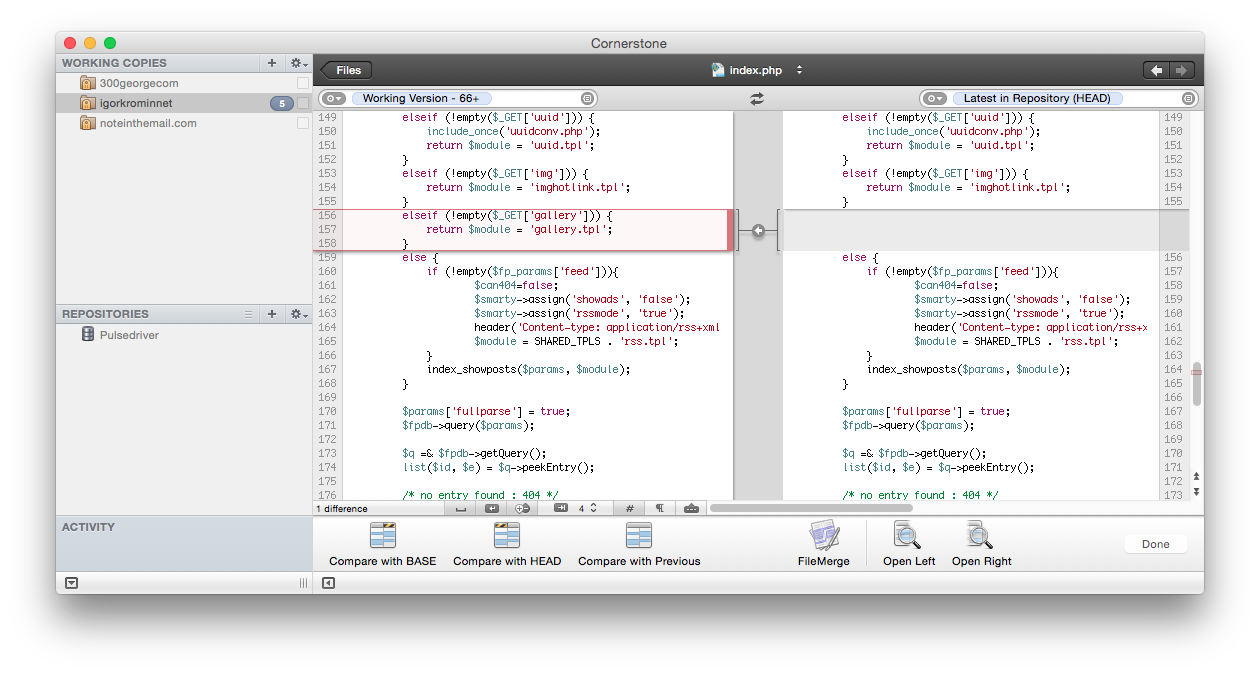

He's curious what Wolfman changed, so he selects moons.txt and asks SmartSVN to show him the changes. Before clicking "Update", though, he clicks on the "Log" button to see who has done what. Later that night, when Dracula wakes up and starts working again, the first thing he wants to do is get Wolfman's changes. He then commits his changes to create Version 8 of the repository.

He also adds a line about Amalthea, which he thinks might be a good site for a secret lair despite its small size: Name Orbital Radius Orbital Period Mass Radius Wolfman goes ahead and edits that line of the file: Name Orbital Radius Orbital Period Mass Radius Looking in the new file, jupiter/moons.txt, Wolfman notices that Dracula has misspelled "Callisto"-it's supposed to have two L's. SmartSVN tells him that a new file has been added to the repository, and Wolfman's working copy is now up to date with Version 7, which is the current head, or most recent, revision. The next morning, when he's back in human form, Wolfman starts work once again. Version numbers always refer to snapshots of the entire repository, so if you say "Version 119" of a file, that is always going to be the same as Version 119 of any other file or directory in the repository. Notice that this version number applies to the whole repository, not just to files that have changed. The version number has now changed from 6 to 7. SmartSVN establishes a connection and copies his changes over to the master. He clicks "Commit", adds a meaningful comment, and then clicks "Continue".

Once he has told Subversion to add the file, Dracula can go ahead and commit his changes to the repository. This is why version control requires you to explicitly tell it which files are to be managed. It's quite common, particularly in programming projects, to have backup files or artefacts of compilation in a directory that aren't worth storing in the repository. Instead, adding the file tells Subversion to start keeping track of changes to that file. This isn't the same as creating it-Dracula has already done that. The first step is to add the file to his working copy. Using his favorite editor, he creates a file in the jupiter directory called moons.txt, and fills it with information about Io, Europa, Ganymede, and Callisto: Name Orbital Radius Orbital Period Mass RadiusĪfter double-checking his data, he wants to commit the file to the repository so that everyone else on the project can see it. While Wolfman is calming down, Dracula decides to add some information to the repository about Jupiter's moons. Unfortunately, he then has a bad hair episode, and has to take a short break. He also gets Version 6, so the files on his machine are the same as the files on Dracula's. There are lots of other graphical clients out there, and many power users run Subversion commands from the shell, but we'll use SmartSVN in this lecture.Īfter filling them both in, he clicks SmartSVN opens a connection to the server, checks that Dracula is allowed access to the repository, then creates a new directory on his computer and copies files into it.Ī couple of cubicles away, Wolfman also runs SmartSVN to check out a working copy of the repository.
#SMARTSVN CLIENT DIFF HOW TO#
This is a Subversion client, i.e., a program that runs on your machine, and knows how to move files back and forth to a repository located on a server. Dracula sits down at his computer and runs SmartSVN.


 0 kommentar(er)
0 kommentar(er)
